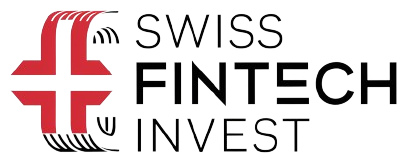Investing $10,000 can be a significant step towards achieving your financial goals, whether you’re saving for retirement, building wealth, or creating a safety net. However, before you start investing, it’s essential to assess your current financial situation and make sure you have a solid foundation. In this article, we’ll explore various strategies for investing $10,000, covering both short-term and long-term options, as well as the importance of building a diversified portfolio and investing in yourself.
Assessing Your Financial Situation Before Investing $10,000
Before you begin investing your $10,000, it’s crucial to take a close look at your current financial situation. This includes evaluating your income, expenses, debts, and savings. By doing so, you can ensure that you’re in a stable position to invest and that you’re not overlooking any critical financial priorities.
One of the first things to consider is whether you have an adequate emergency fund. An emergency fund is a savings account that covers unexpected expenses, such as job loss, medical emergencies, or car repairs. Ideally, your emergency fund should cover three to six months’ worth of living expenses. If you don’t have an emergency fund, it may be wise to allocate a portion of your $10,000 towards building one.
Building an Emergency Fund
An emergency fund is a vital component of any financial plan. It provides a safety net during times of financial hardship and can help you avoid taking on high-interest debt to cover unexpected expenses. When building your emergency fund, consider keeping the money in a high-yield savings account, which offers better interest rates than traditional savings accounts.
Aim to save at least three to six months’ worth of living expenses in your emergency fund. This may seem like a daunting task, but you can start small and gradually increase your contributions over time. Consider setting up automatic transfers from your checking account to your savings account to make the process easier and more consistent.
Paying Off High-Interest Debt
Another important consideration before investing is whether you have any high-interest debt, such as credit card balances or personal loans. High-interest debt can quickly erode your financial progress and make it difficult to build wealth over time. If you have significant high-interest debt, it may be wise to use a portion of your $10,000 to pay it off.
When deciding whether to pay off debt or invest, compare the interest rate on your debt to the potential returns you could earn from investing. If the interest rate on your debt is higher than the expected return on your investments, paying off the debt may be the better choice. However, if you have low-interest debt, such as a mortgage or student loans, investing may be more beneficial in the long run.
Short-Term Investment Options for $10,000
If you have a short-term financial goal or need access to your funds within the next few years, short-term investment options may be more appropriate for your $10,000. These investments typically offer lower returns but also carry less risk than long-term investments.
Two popular short-term investment options include high-yield savings accounts and certificates of deposit (CDs). These options provide a safe and accessible way to grow your money while earning interest.
High-Yield Savings Accounts
High-yield savings accounts offer higher interest rates than traditional savings accounts, allowing your money to grow faster. These accounts are FDIC-insured, meaning your funds are protected up to $250,000 per depositor per bank. High-yield savings accounts are also highly liquid, allowing you to access your money whenever you need it without penalty.
When choosing a high-yield savings account, compare interest rates, minimum balance requirements, and any associated fees. Some of the best high-yield savings accounts currently offer annual percentage yields (APYs) of around 5.25% with no minimum balance requirements.
Creating a CD Ladder
Another short-term investment option is creating a CD ladder. A CD ladder involves purchasing multiple CDs with different maturity dates, allowing you to take advantage of higher interest rates on longer-term CDs while still maintaining some liquidity.
To create a CD ladder, divide your $10,000 into equal portions and invest each portion in a CD with a different maturity date. For example, you could invest $2,000 each in 6-month, 12-month, 18-month, 24-month, and 36-month CDs. As each CD matures, you can choose to reinvest the funds or use them for your short-term financial goals.
| CD Term | Investment Amount | APY |
|---|---|---|
| 6 months | $2,000 | 3.50% |
| 12 months | $2,000 | 4.50% |
| 18 months | $2,000 | 4.75% |
| 24 months | $2,000 | 5.00% |
| 36 months | $2,000 | 5.25% |
Long-Term Investment Strategies for $10,000
If you have a longer investment horizon and are willing to take on more risk, long-term investment strategies may be more suitable for your $10,000. These strategies aim to grow your money over several years or decades, allowing you to take advantage of compound interest and potentially earn higher returns.
Long-term investment options include retirement accounts, such as 401(k)s and IRAs, as well as self-directed brokerage accounts, which allow you to invest in a wide range of assets, including stocks, bonds, and mutual funds.
Maximizing Retirement Accounts: 401(k) and IRA
If you haven’t already, consider using a portion of your $10,000 to maximize your contributions to retirement accounts, such as a 401(k) or an Individual Retirement Account (IRA). These accounts offer tax advantages and can help you build a substantial nest egg for your retirement years.
If your employer offers a 401(k) plan with a company match, prioritize contributing enough to receive the full match, as this is essentially free money. For the 2023 tax year, you can contribute up to $22,500 to your 401(k), with an additional $7,500 catch-up contribution allowed if you’re age 50 or older. For 2024, the limits increase to $23,000 and $8,000, respectively.
If you don’t have access to a 401(k) or have already maximized your contributions, consider opening and funding an IRA. For the 2023 tax year, you can contribute up to $6,500 to an IRA, with an additional $1,000 catch-up contribution allowed if you’re age 50 or older. For 2024, the limits increase to $7,000 and $1,000, respectively.
Investing in a Self-Directed Brokerage Account
A self-directed brokerage account allows you to invest in a wide range of assets, including individual stocks, exchange-traded funds (ETFs), and mutual funds. By investing in a diversified portfolio of these assets, you can potentially earn higher returns than with short-term investments, although you’ll also face more risk.
When choosing a self-directed brokerage account, consider factors such as fees, investment options, and research tools. Some popular online brokers offer commission-free trades, low fees, and user-friendly platforms, making them a good choice for beginner investors.
If you’re new to investing, consider starting with a simple portfolio of low-cost index funds or ETFs, which provide broad exposure to the stock and bond markets. As you gain more knowledge and experience, you can gradually diversify your portfolio and invest in individual stocks or more complex securities.
Exploring Real Estate Investment Trusts (REITs)
Another long-term investment option for your $10,000 is investing in Real Estate Investment Trusts (REITs). REITs are companies that own and manage income-generating real estate properties, such as apartments, office buildings, shopping centers, and warehouses. By investing in REITs, you can gain exposure to the real estate market without the need to purchase and manage properties directly.
REITs offer several potential benefits, including regular income through dividend payments, long-term capital appreciation, and diversification from traditional stocks and bonds. Many REITs are publicly traded on stock exchanges, making them accessible to individual investors.
When investing in REITs, consider factors such as the type of properties the REIT invests in, the geographical diversification of its portfolio, its dividend yield and growth history, and its management team. Keep in mind that REITs are subject to market fluctuations and may carry additional risks compared to other investments.
Building a Diversified Investment Portfolio
Regardless of whether you choose short-term or long-term investments for your $10,000, it’s essential to build a diversified portfolio to manage risk and optimize returns. Diversification involves spreading your investments across different asset classes, sectors, and geographical regions to minimize the impact of any single investment’s performance on your overall portfolio.
A well-diversified portfolio typically includes a mix of stocks, bonds, and other assets, such as real estate or commodities. The exact mix will depend on your investment goals, risk tolerance, and time horizon.
Understanding Asset Allocation
Asset allocation refers to the process of dividing your investment portfolio among different asset classes, such as stocks, bonds, and cash equivalents. The goal of asset allocation is to balance risk and reward by investing in a mix of assets that aligns with your financial objectives and risk tolerance.
A common approach to asset allocation is to invest more heavily in stocks when you’re younger and gradually shift towards bonds and cash equivalents as you near retirement. This is because stocks have historically offered higher long-term returns but also carry more risk, while bonds and cash equivalents provide more stability but lower returns.
Here’s an example of how you might allocate your $10,000 investment based on your age and risk tolerance:
- Aggressive (20s-30s): 80% stocks, 15% bonds, 5% cash equivalents
- Moderate (40s-50s): 60% stocks, 35% bonds, 5% cash equivalents
- Conservative (60s+): 40% stocks, 50% bonds, 10% cash equivalents
Rebalancing Your Portfolio
Over time, the performance of your investments may cause your portfolio to drift away from your target asset allocation. For example, if stocks outperform bonds, your portfolio may become more heavily weighted towards stocks than you originally intended. This can expose you to more risk than you’re comfortable with.
To maintain your desired asset allocation, it’s important to periodically rebalance your portfolio by selling investments that have become overweight and using the proceeds to buy investments that are underweight. A common rule of thumb is to rebalance your portfolio once a year or whenever your asset allocation drifts more than 5% from your target.
Rebalancing can help you manage risk, maintain diversification, and potentially enhance long-term returns by systematically selling high and buying low. However, keep in mind that rebalancing may involve transaction costs and potential tax implications, so it’s important to consider these factors when deciding how frequently to rebalance.
Investing in Yourself: The Best Investment
While investing your $10,000 in various financial instruments is important, don’t overlook the value of investing in yourself. Investing in your education, skills, and personal development can yield significant long-term returns in the form of increased earning potential, job satisfaction, and overall well-being.
Consider allocating a portion of your $10,000 towards courses, workshops, or certifications that can enhance your knowledge and skills in your current field or help you transition to a new career. Investing in your health and well-being, such as through a gym membership or healthy eating habits, can also pay dividends in the form of increased energy, productivity, and reduced healthcare costs.
Enhancing Your Knowledge and Skills
In today’s rapidly evolving job market, continuous learning and skill development are essential for staying competitive and advancing your career. Consider using a portion of your $10,000 to invest in online courses, workshops, or professional development programs that can help you acquire new skills or deepen your expertise in your current field.
Platforms like Coursera and Skillshare offer a wide range of online courses in various subjects, from business and technology to creative arts and personal development. These courses are often taught by industry experts and can be completed at your own pace, making them a convenient and cost-effective way to enhance your knowledge and skills.
Investing in Your Health and Well-being
Investing in your physical and mental health is another important aspect of personal development that can yield significant long-term benefits. Consider using a portion of your $10,000 to invest in a gym membership, personal trainer, or healthy eating habits that can improve your overall well-being and reduce your risk of chronic diseases.
Additionally, prioritizing your mental health and work-life balance can lead to increased productivity, job satisfaction, and overall happiness. Consider investing in stress-reduction techniques, such as meditation or yoga, or taking time off for a much-needed vacation to recharge and refocus.
Remember, investing in yourself is a lifelong process that can pay dividends in all aspects of your life. By allocating a portion of your $10,000 towards personal development, you can set yourself up for long-term success and fulfillment.
See also:




Leave a Comment